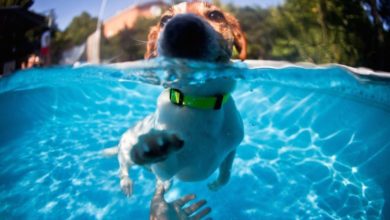Ultimate Guide to Doberman Pinscher Training: Tips, Techniques, and Tools
doberman-pinscher-training-guide
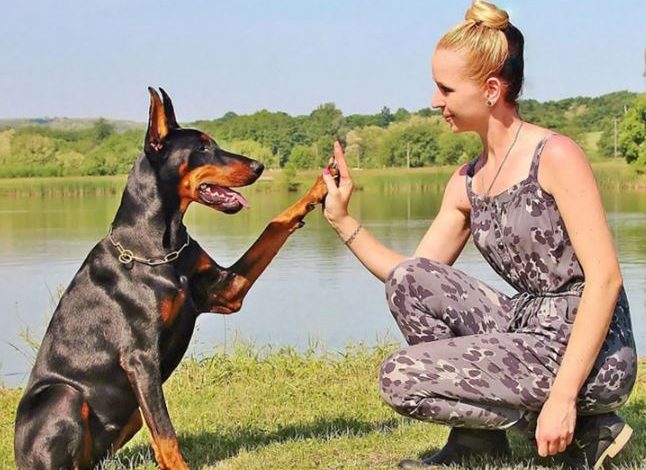
Learn how to train your Doberman Pinscher effectively with this comprehensive guide. From basic commands to advanced obedience, socialization, and addressing behavioral issues, our tips and techniques ensure a well-behaved and happy Doberman.
Introduction to Doberman Pinscher Training

Understanding the Importance of Training Your Doberman
Training a Doberman Pinscher is crucial for ensuring a well-behaved and obedient pet. Given their intelligence and energy, untrained Dobermans can develop behavioral problems that are difficult to manage. Training helps establish a strong bond between the owner and the dog, promoting trust and respect.
The Benefits of Early Training for Dobermans
Starting training early has numerous benefits. Puppies are more adaptable and can learn commands and behaviors quickly. Early training helps in preventing bad habits from forming and ensures that the dog grows up to be well-adjusted and socialized. It also makes handling easier as the dog matures.
Getting Started: Basic Training Tips

Doberman Pinscher Training Tips for Beginners
- Consistency: Be consistent with commands and rules to avoid confusing your Doberman.
- Patience: Training takes time, so be patient and persistent.
- Short Sessions: Keep training sessions short (10-15 minutes) to maintain your dog’s attention.
- Positive Reinforcement: Use treats, praise, and play as rewards for good behavior.
Setting Up a Training Schedule for Your Doberman
Creating a regular training schedule is essential. Begin with basic commands like sit, stay, and come. Gradually introduce more complex commands and tricks as your dog progresses. Ensure to practice in different environments to generalize the behaviors.
Socialization Techniques

Why Socialization is Crucial for Doberman Pinschers
Socialization is key to preventing aggression and anxiety. Exposing your Doberman to various people, animals, and environments from a young age helps them become confident and well-adjusted.
Tips for Socializing Your Doberman with Other Dogs and People
- Puppy Classes: Enroll your puppy in socialization classes.
- Regular Walks: Take your dog on walks in busy areas to expose them to different stimuli.
- Playdates: Arrange playdates with other dogs.
- Gradual Exposure: Gradually introduce your Doberman to new experiences.
Obedience Training Essentials

Teaching Basic Commands: Sit, Stay, and Come
- Sit: Hold a treat above your dog’s head and move it back, prompting them to sit. Say « sit » and reward them.
- Stay: Have your dog sit, then step back while saying « stay. » Reward them for staying in place.
- Come: Use a long leash, say « come, » and gently pull them towards you. Reward them when they reach you.
Advanced Obedience Training Tips for Doberman Pinschers
- Heel: Teach your dog to walk beside you without pulling.
- Recall: Train your dog to come to you in various situations.
- Place: Teach your dog to go to a designated spot on command.
Positive Reinforcement Methods

The Power of Positive Reinforcement in Doberman Training
Positive reinforcement involves rewarding desirable behaviors to encourage their repetition. This method builds trust and fosters a positive relationship between you and your dog.
Effective Rewards for Training Your Doberman Pinscher
- Treats: Use high-value treats that your dog loves.
- Praise: Verbal praise and petting.
- Toys: Reward with playtime or favorite toys.
- Play: Incorporate fun activities as rewards.
Addressing Behavioral Issues

Common Behavioral Problems in Dobermans and How to Fix Them
- Chewing: Provide plenty of chew toys and supervise closely.
- Barking: Teach a « quiet » command and reward silence.
- Jumping: Train your dog to sit when greeting people.
- Separation Anxiety: Gradually increase the time your dog spends alone and create a calm environment.
Tips for Preventing Aggression and Anxiety in Dobermans
- Early Socialization: Expose your dog to various situations and people.
- Regular Exercise: Provide ample physical and mental stimulation.
- Positive Reinforcement: Reward calm and non-aggressive behavior.
- Professional Help: Seek help from a trainer if issues persist.
Crate Training Your Doberman
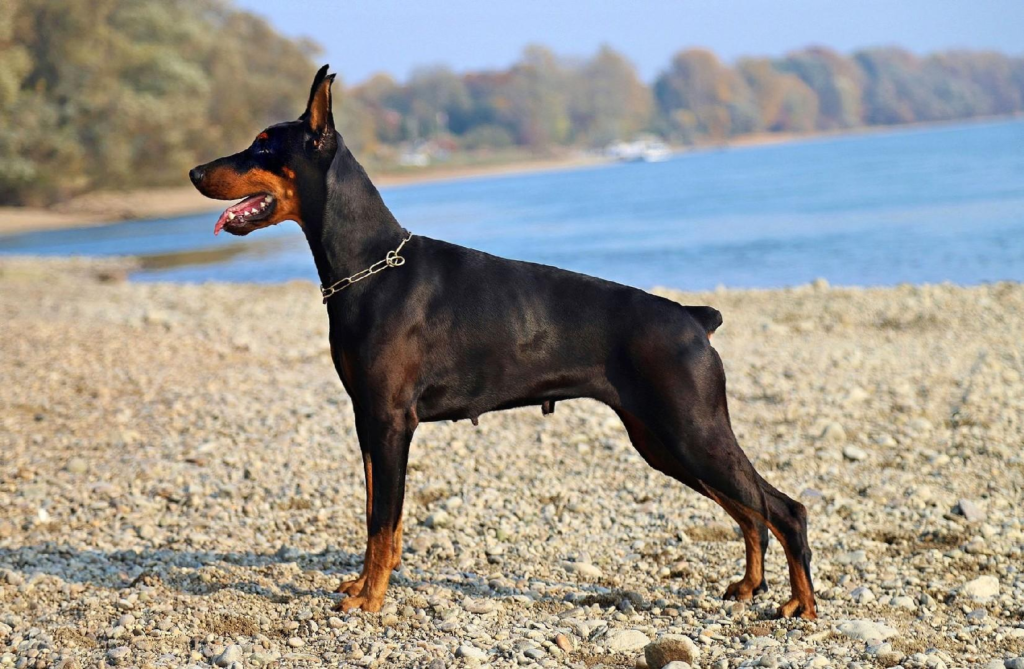
The Benefits of Crate Training for Doberman Pinschers
Crate training provides a safe and secure environment for your dog. It aids in housebreaking, prevents destructive behavior, and offers a sense of security.
Step-by-Step Guide to Crate Training Your Doberman
- Introduction: Introduce the crate positively, using treats and praise.
- Short Stays: Start with short periods inside the crate and gradually increase the duration.
- Consistent Routine: Create a routine for crate time.
- Comfort: Ensure the crate is comfortable with bedding and toys.
Housebreaking Tips

Effective Housebreaking Techniques for Doberman Puppies
- Routine: Establish a consistent feeding and potty schedule.
- Supervision: Supervise your puppy closely to prevent accidents.
- Designated Area: Use a specific area for potty breaks.
- Positive Reinforcement: Praise and reward your puppy for going outside.
How to Handle Housebreaking Setbacks
- Patience: Understand that accidents happen and be patient.
- Clean Thoroughly: Clean accidents thoroughly to remove the scent.
- Adjust Schedule: Adjust your puppy’s schedule if accidents persist.
- Consult a Vet: Rule out any medical issues that could be causing accidents.
Leash Training Techniques
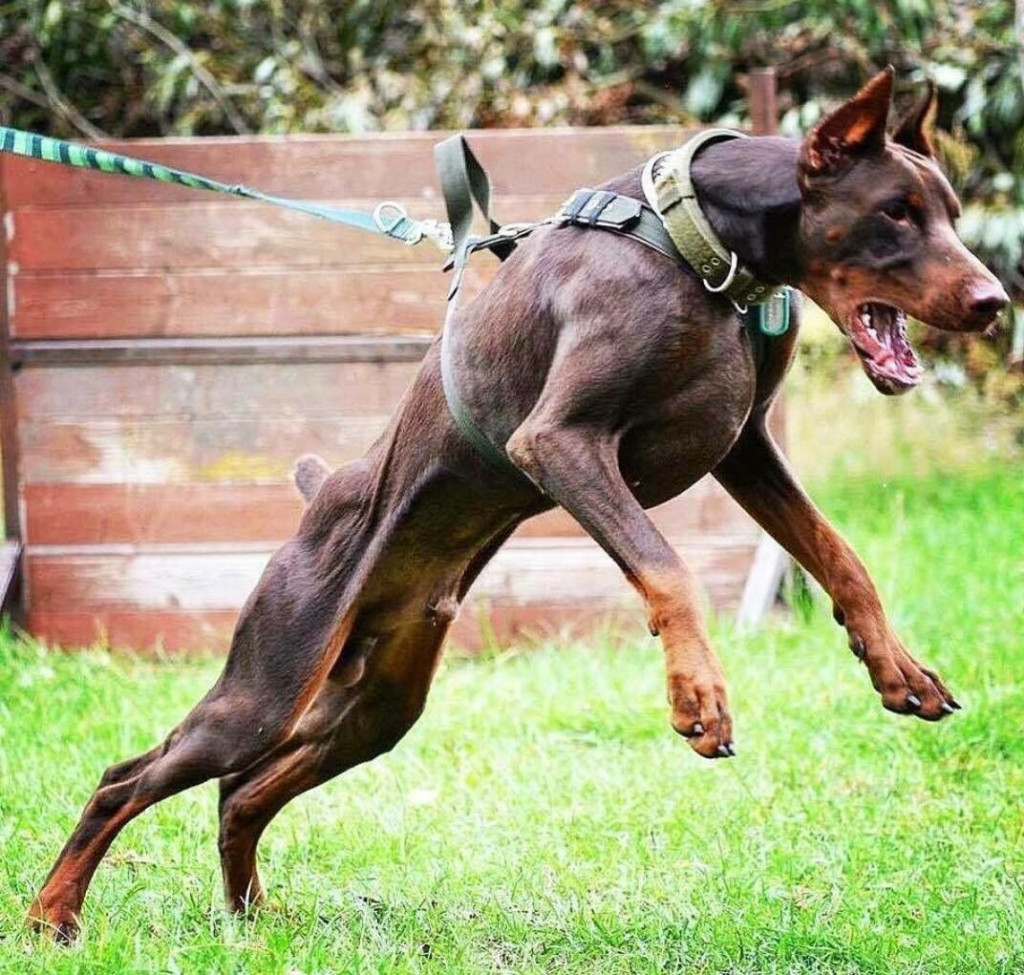
Tips for Teaching Your Doberman to Walk on a Leash
- Proper Equipment: Use a comfortable collar and leash.
- Short Walks: Start with short walks and gradually increase the distance.
- Heel Command: Teach the heel command to keep your dog by your side.
- Reward Good Behavior: Reward your dog for walking calmly on the leash.
How to Prevent Pulling and Lunging During Walks
- Stop and Go: Stop walking when your dog pulls and resume when they stop.
- Change Direction: Change direction frequently to keep your dog focused.
- Distraction Training: Teach your dog to focus on you instead of distractions.
- Consistency: Be consistent with training to prevent pulling.
Training Tools and Accessories
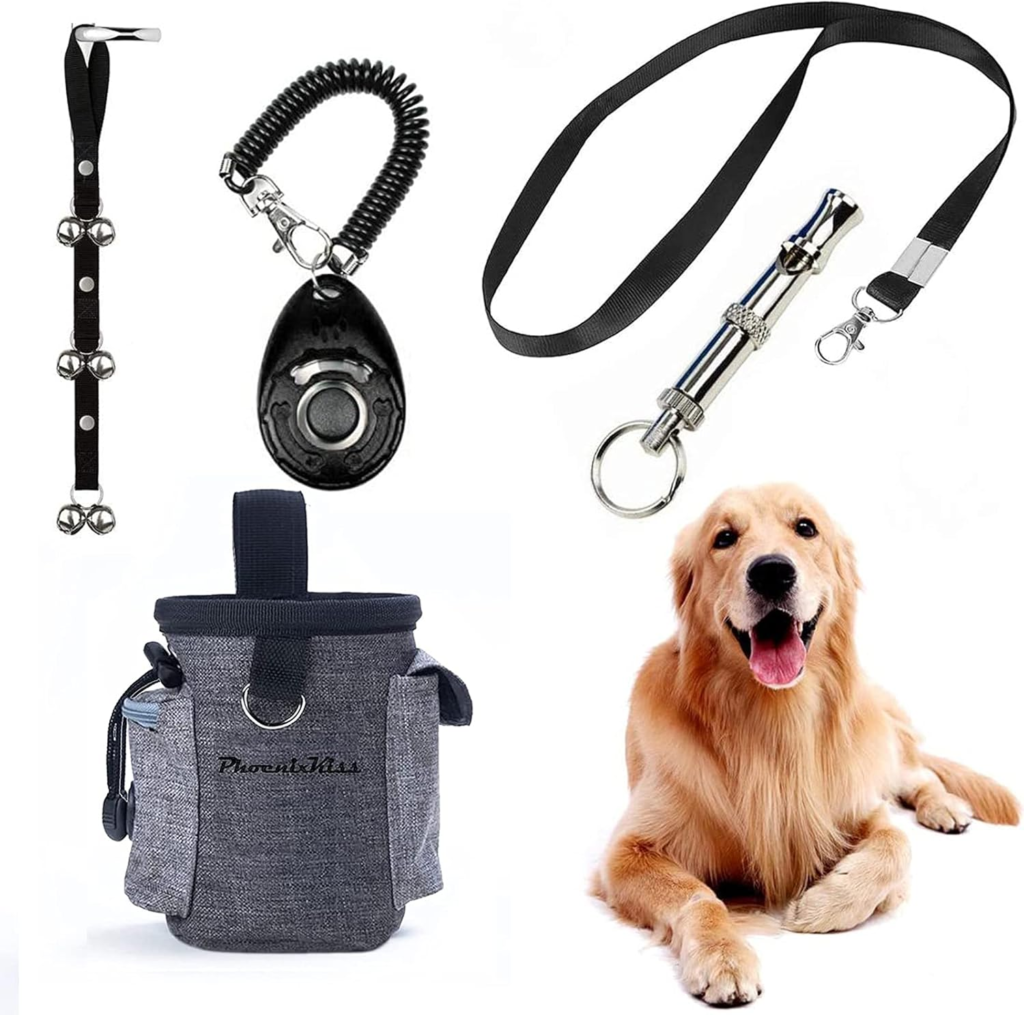
Essential Training Tools for Doberman Pinscher Owners
- Leash and Collar: A sturdy leash and comfortable collar.
- Clicker: For clicker training.
- Treat Pouch: For easy access to rewards.
- Crate: For crate training and safe confinement.
Choosing the Right Collar and Leash for Training
- Comfort: Choose a collar that fits well and is comfortable.
- Durability: Select a durable leash that can withstand your dog’s strength.
- Type: Consider different types of collars (flat, martingale, etc.) based on your dog’s needs.
- Length: Use a leash length that allows control and freedom.
Consistency and Patience in Training
Why Consistency is Key in Doberman Training
Consistency ensures that your dog understands what is expected of them. Inconsistent commands and rules can confuse your dog and hinder progress.
Tips for Staying Patient and Persistent
- Set Realistic Goals: Set achievable training goals.
- Take Breaks: Take breaks to prevent frustration for both you and your dog.
- Celebrate Progress: Celebrate small successes to stay motivated.
- Stay Positive: Maintain a positive attitude throughout the training process.
Professional Training Resources
When to Seek Help from a Professional Dog Trainer
If you encounter persistent behavioral issues or if your training efforts are not yielding results, it might be time to seek help from a professional trainer.
Finding Doberman-Specific Training Classes
Look for trainers or classes that specialize in working with Doberman Pinschers. Breed-specific knowledge can be beneficial for addressing unique behavioral traits.
Mental Stimulation and Enrichment
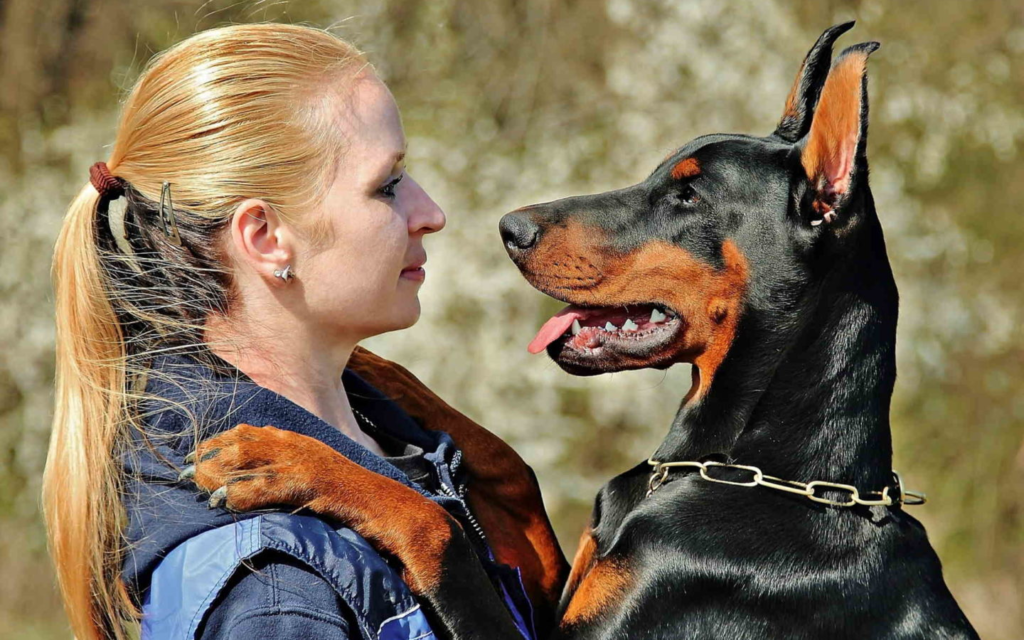
Incorporating Mental Stimulation into Training Sessions
- Puzzle Toys: Use puzzle toys to challenge your dog’s mind.
- Interactive Games: Play interactive games like hide and seek.
- New Commands: Continuously teach new commands and tricks.
- Variety: Vary training activities to keep your dog engaged.
Best Enrichment Activities for Doberman Pinschers
- Scent Work: Engage your dog’s sense of smell with scent games.
- Agility Training: Set up an agility course for physical and mental stimulation.
- Fetch: Play fetch to combine exercise with training.
- Training Games: Incorporate training into playtime with games like tug-of-war.
Keeping Training Sessions Fun
How to Make Training Enjoyable for Your Doberman
- Positive Environment: Create a positive and upbeat training environment.
- Rewards: Use your dog’s favorite rewards.
- Play Breaks: Include play breaks to keep your dog motivated.
- Short Sessions: Keep sessions short and fun to maintain interest.
Creative Training Games and Exercises
- Treasure Hunt: Hide treats or toys and let your dog find them.
- Obstacle Course: Set up a simple obstacle course.
- Target Training: Teach your dog to touch a target with their nose.
- Trick Training: Teach fun tricks like rolling over or playing dead.
Monitoring Progress and Adjusting Techniques
Tracking Your Doberman’s Training Progress
- Training Journal: Keep a journal to track progress and setbacks.
- Regular Assessments: Regularly assess your dog’s performance.
- Adjust Goals: Adjust training goals based on progress.
- Celebrate Successes: Celebrate milestones and achievements.
Adapting Training Techniques to Suit Your Dog’s Needs
- Individualized Approach: Adapt techniques to fit your dog’s personality and learning style.
- Seek Feedback: Get feedback from other trainers or dog owners.
- Stay Flexible: Be open to changing your approach if something isn’t working.
- Continuous Learning: Stay informed about new training methods and techniques.
Conclusion
Training a Doberman Pinscher requires dedication, patience, and consistency, but the rewards are immense. A well-trained Doberman is not only a joy to have as a companion but also a well-behaved member of the community. By starting training early, using positive reinforcement, and being consistent with your commands and rules, you can ensure your Doberman grows into a well-adjusted and obedient dog. Remember, every Doberman is unique, so be flexible and adapt your training techniques to suit your dog’s individual needs. If challenges arise, don’t hesitate to seek professional help. With the right approach, you and your Doberman can build a strong, trusting relationship that lasts a lifetime.
FAQs About Doberman Pinscher Training
- What age should I start training my Doberman Pinscher?
- It’s best to start training a Doberman Pinscher as early as 8 weeks old. Early training helps in establishing good behaviors and prevents bad habits from forming.
- How long should training sessions be for a Doberman puppy?
- Training sessions for a Doberman puppy should be short, around 10-15 minutes. Puppies have shorter attention spans, so brief, consistent training works best.
- What are the most important commands to teach my Doberman Pinscher?
- The most important commands include « sit, » « stay, » « come, » « heel, » and « leave it. » These basic commands help establish control and ensure safety.
- Can Doberman Pinschers be trained using positive reinforcement?
- Yes, positive reinforcement is highly effective for Doberman Pinschers. Using treats, praise, and play as rewards encourages good behavior and strengthens the bond between you and your dog.
- How can I socialize my Doberman Pinscher properly?
- Socialize your Doberman by exposing them to various people, dogs, and environments. Puppy classes, regular walks, and playdates are excellent ways to ensure your dog is well-socialized.
- What should I do if my Doberman Pinscher shows signs of aggression?
- If your Doberman shows signs of aggression, seek professional help from a dog trainer or behaviorist. Early intervention and proper training can address and correct aggressive behavior.
- How do I crate train my Doberman Pinscher?
- Introduce the crate positively, use treats and praise to encourage your dog to enter, and gradually increase the time they spend inside. Ensure the crate is comfortable with bedding and toys.
- What are some effective methods for housebreaking a Doberman puppy?
- Establish a consistent feeding and potty schedule, supervise your puppy closely, use a designated potty area, and reward your puppy for going outside. Patience and consistency are key.
- How can I prevent my Doberman from pulling on the leash?
- Use a « stop and go » technique, changing directions frequently to keep your dog focused, and reward calm walking. Teaching the « heel » command also helps in preventing pulling.
- When should I consider hiring a professional dog trainer for my Doberman?
- Consider hiring a professional trainer if you encounter persistent behavioral issues, if your training efforts aren’t yielding results, or if you need help with advanced training techniques. A professional can provide valuable guidance and support.





